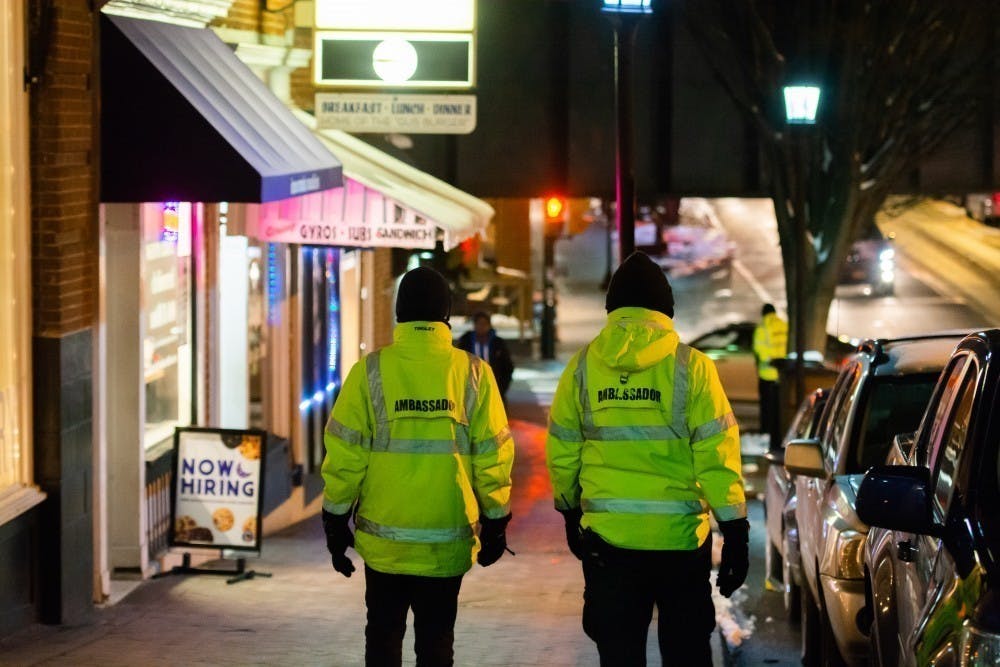中文版请点击此处
In the wake of the events of Aug. 11 and 12, some members of the University community had to grapple with the reality that Charlottesville — with its idyllic landscape and prestigious university — was not the safe haven some had previously seen it as. Four years later, while there hasn’t been a national-newsworthy event of violence, students now continue to fear violence, indicated by the dreaded community alert emails we find ever too often in our inbox. A quick perusal of any student’s inbox reveals telltale signs of the increasing violence in and around the University — 13 community alerts reporting varying threats from shots fired to assault have been sent since Aug. 21. With violence on the rise and Timothy J. Longo the most present figure in our inboxes, it is the very people who pushed most heavily and determinedly for safety back in 2017 that are now at risk. The student population is in danger, and it feels the “community of trust” so touted at the University has ruptured, as students can no longer count on safety from administrators and higher officials.
Arguably the most frustrating piece of the increased violence in Charlottesville is not that it hasn’t stopped completely — to think it can be completely prevented is both naive and an unlikely dream — but the seeming lack of care and urgency displayed by University administration. Email after email has been sent with little to no description of individuals, describing the perpetrators as “unknown suspects.” While it is extraordinarily unlikely that all suspects will be able to be described or identified, the repeated “unknowns” are unacceptable — if we are to believe, as is evident, that crime has been on the rise, and has continued to be in similar locations, why has more attention not been paid to those areas? Why are there not more immediate follow-ups to those emails, confirming identities, giving descriptions or at least validating that officials are completing detailed investigations into the incidents?
Of course, to place all blame on the administration for being unable to identify suspects is unfair — the nature of crime itself is that it often goes unpunished. With that said, it feels as though a lack of thought and consideration has been put into dealing with student concerns and addressing fears as well as a physical time delay in reporting. Having no details whatsoever, despite the constant and oftentimes overbearing presence of uniformed officers on Grounds, seems improbable. Given that these incidents have become more and more prevalent, one would hope to see more attention to detail and watchfulness so that these suspects do not have to go entirely unknown.
In light of this lack of information provided by administration, a delay in their response time and a general lack of distrust, students have even resorted to other arenas like social media to find out details of violent events. University students, myself included, have begun to find alternate ways of finding news — specifically through word of mouth and the announcements of our peers — in an attempt to get information more reliably and in a manner that reflects the urgency of the situation. We feel we can no longer count on the vague descriptions and continued unknowns of the community alerts.
To make matters worse, the only true address of student concerns came in the form of a tone-deaf email titled “Take 3 Minutes,” in which students are encouraged to take time on their own to think through emergency situations and how they would handle them. The issue, however, is not an absence of thinking through scenarios or not having a plan — it is that these events are continuously happening under the watch of our administrators. Of course, we should all take time to think through our plans for if the worst happens. But the harsh reality is that when confronted with a violent life-or-death scenario, the chances of having time to spare to assess the situation or even to mitigate the violence in any way are slim. Students shouldn’t have to be entirely responsible for their own safety. Placing the responsibility on University students to care for themselves when an emergency arises is not enough — the University must acknowledge the presence of violence and take action so that students are protected.
University administration is responsible for protecting students. The University administration cannot prevent all violence, but should still work towards finding an equitable and just method to ensure students feel safe. The University should be wary of adding law enforcement, who can and have caused serious harm to marginalized groups — as in the case of Martese Johnson’s arrest on the Corner in 2015. Simply increasing the presence of uniformed officers is not the answer. But adding more non-police, non-threatening community members — such as ambassadors — or doing the work to establish a network of student-to-student communication are all possible steps to reestablish a community of trust within the University. The administration should be the ones working to ensure that there are community members present who can survey the area, listen when students report details that could assuage fears, provide important information and work to be an accurate and reliable first source for security concerns, all while ensuring the comfort of all students. I don’t have all the answers — but I do know the first step is for the administration to take responsibility for the safety of their students by any means necessary.
Hailey Robbins is a Viewpoint Writer for The Cavalier Daily. She can be reached at opinion@cavalierdaily.com.
The opinions expressed in this column are not necessarily those of The Cavalier Daily. Columns represent the views of the authors alone.
Correction: This article has been updated to clarify the author’s perspective on law enforcement.





